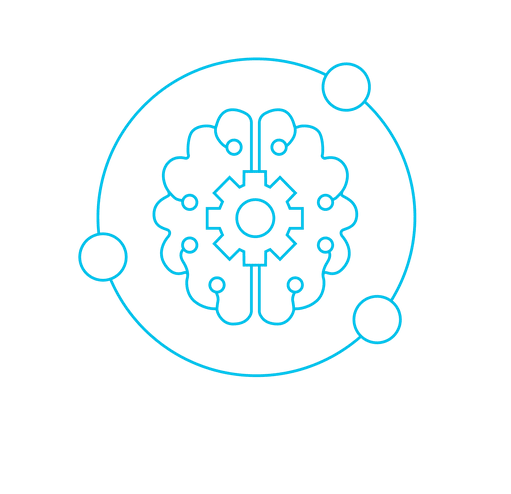‡ Not licensed in accordance with Canadian law. Not available for sale in Canada. Not CE marked. Not available for sale in all regions.
‡‡According to an internal study conducted by GE Healthcare.
‡ Not licensed in accordance with Canadian law. Not available for sale in Canada. Not CE marked. Not available for sale in all regions.
result


PREVIOUS
${prev-page}
NEXT
${next-page}
Subscribe Now
Manage Subscription
FOLLOW US
Contact Us • Cookie Preferences • Privacy Policy • California Privacy PolicyDo Not Sell or Share My Personal Information • Terms & Conditions • Security
© 2024 GE HealthCare. GE is a trademark of General Electric Company. Used under trademark license.
IN PRACTICE
New deep learning tool streamlines MR slice prescription
New deep learning tool streamlines MR slice prescription

A new deep learning software from GE Healthcare is helping streamline MR scan prescription that may help reduce inconsistencies in imaging across patients and technologists. AIRx™‡ is an AI-based, automated workflow tool for MR brain scanning that automatically "prescribes" slices to help reduce redundant, manual steps. It uses deep learning algorithms built right into the MR technologist’s workflow to automatically detect and prescribe slices for neurological exams, delivering consistent and quantifiable results. AIRx™ also helps produce images that have less variability between technologists and between scans, helping to lower the chances a patient will be recalled due to incorrect slice placement. An increase in consistency is particularly important when doing longitudinal assessments on patients with diseases that progress over time.
"Every time I select a landmark for the prescription, the slice placement is dead on," says Tom Schrack, ARMRIT, MRSO, Manager of MR Education and Technical Development at Fairfax Radiological Consultants in Fairfax, Virginia.
Schrack and two other senior technologists at Fairfax Radiological Consultants have used a prototype of AIRx™ – which stands for Artificial Intelligence prescription (AI Rx) – since early November 2018, conducting about 15 cases on their facility’s 3.0T SIGNA™ Architect MR scanner.
IN PRACTICE
New deep learning tool streamlines MR slice prescription
New deep learning tool streamlines MR slice prescription

A new deep learning software from GE Healthcare is helping streamline MR scan prescription that may help reduce inconsistencies in imaging across patients and technologists. AIRx™‡ is an AI-based, automated workflow tool for MR brain scanning that automatically "prescribes" slices to help reduce redundant, manual steps. It uses deep learning algorithms built right into the MR technologist’s workflow to automatically detect and prescribe slices for neurological exams, delivering consistent and quantifiable results. AIRx™ also helps produce images that have less variability between technologists and between scans, helping to lower the chances a patient will be recalled due to incorrect slice placement. An increase in consistency is particularly important when doing longitudinal assessments on patients with diseases that progress over time.
"Every time I select a landmark for the prescription, the slice placement is dead on," says Tom Schrack, ARMRIT, MRSO, Manager of MR Education and Technical Development at Fairfax Radiological Consultants in Fairfax, Virginia.
Schrack and two other senior technologists at Fairfax Radiological Consultants have used a prototype of AIRx™ – which stands for Artificial Intelligence prescription (AI Rx) – since early November 2018, conducting about 15 cases on their facility’s 3.0T SIGNA™ Architect MR scanner.
Deep learning for faster imaging
AIRx™ is built on Edison, a new platform that helps accelerate the development and adoption of AI technology and empower providers to deliver faster, more precise care. Edison is a holistic, integrated digital platform for healthcare, combining globally diverse data sets from across modalities, vendors, healthcare networks and life sciences settings.
It enables GE Healthcare to integrate and assimilate data from disparate sources, apply advanced analytics and AI to transform the data, and generate insights to support clinical, financial and operational decision-making. Edison includes deployment-agnostic intelligent applications and smart devices, designed to help achieve greater efficiency, increase access to care, and improve patient outcomes.
By leveraging this platform, AIRx™ features a pre-trained neural network model that leverages deep learning algorithms and anatomy recognition based on a database of over 36,000 images sourced from clinical studies and reference sites.
AIRx™ helps increase productivity by simplifying workflow steps, thus significantly reducing user prescription time. A study showed average prescription time savings can be up to 62%.‡‡
It precisely places slices on the smallest and most challenging neurological anatomy, such as optic nerves. "Everything that it says it can find, it finds it with amazing accuracy," says Schrack. "For example, if I tell AIRx™ that I want an oblique sagittal of the left optic nerve, it puts a slice right down the center of that left optic nerve. AIRx™ does that immediately and perfectly, every time. It can save me some eye strain, save time from tweaking parameters, and get me going a little bit faster."
Schrack says AIRx™ is one step in the right direction of fulfilling the promise of AI, with the potential to use it on complicated anatomy such as the heart and joints, while continuing to simplify the technologist’s job.
"You’ll never hear a technologist say, ‘I wish this was harder to use,’ or ‘I wish the machine would stop automating tasks for me’," says Schrack. "They want the machine to make decisions for them so that it’s easier, and I think the only way that’s going to happen is with deep learning and artificial intelligence. For the technologist, anything that reduces the number of decisions in an MR exam will make their job better."









